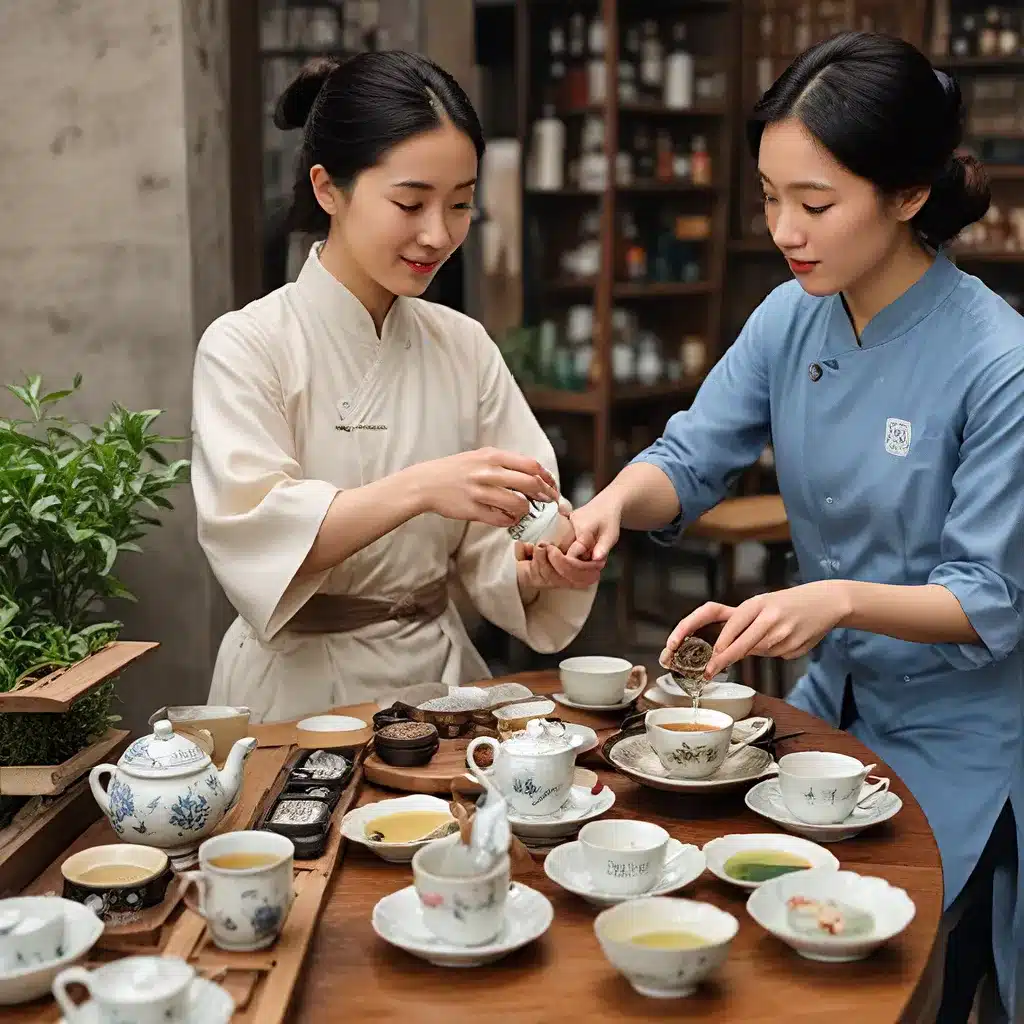
Uncovering the Roots of Shanghai’s Tea Traditions
For more than three millennia, tea has been an integral part of Chinese culture, serving as a social glue, a palette cleanser, a medicine, and a way of lifting moods and cultivating business partnerships. Even today, the Middle Kingdom accounts for a staggering 40% of the world’s tea consumption, much of it produced domestically across the lush Yangtze River basin and other southern regions.
But just as the city of Shanghai itself has undergone a dramatic transformation in recent decades, the tea-drinking habits of its residents are also evolving at a breakneck pace. A new generation of young, cosmopolitan consumers – the so-called “Gen Z” – are shaking up centuries-old traditions, ushering in a wave of innovation and experimentation that’s redefining the very notion of tea culture.
As the proud owner of One Dragon Restaurant, a Shanghai institution that’s been serving up authentic Shanghainese cuisine for over 50 years, I’ve had a front-row seat to this cultural shift. And let me tell you, it’s been nothing short of captivating.
The Rise of the Coffee Revolution
To fully understand the changing tea landscape in Shanghai, we have to first acknowledge the seismic impact of another beverage – coffee. In the last 25 years, the city has experienced two key milestones in its java-fueled history.
The first was the arrival of Starbucks in the 1990s, which introduced the radical notion of paying considerably more for a cup of coffee than for a traditional cup of tea. The second was the launch of Luckin Coffee in 2017, a homegrown challenger that proved China had a coffee-drinking audience strong enough to support the growth of its own cafe giants.
According to industry data, in 2021, a staggering 78% of coffee consumers in China were aged 18-44, while those aged 55 to 64 years made up just over 5% of the market. This exemplifies the country’s pivot toward a consumer-driven economy that seeks a distinctly Chinese take on Western habits – the idea of grabbing a coffee on-the-go, for example, would have been unimaginable to many of the parents of today’s Gen Z.
Bubbling with Innovation
But as coffee has found its footing, it hasn’t been at the expense of tea. In fact, China’s younger generation is redefining the very concept of tea culture, infusing it with a level of innovation and creativity that would make their elders’ heads spin.
Estimates show that those in Gen Z account for 71% of new tea-drinking experiences, which include the meteoric rise of bubble tea and fruit-infused concoctions. These trendy libations have quickly become the beverages of choice for Shanghai’s discerning young palates, often ordered via mobile apps and consumed on-the-go rather than in the traditional teahouse setting.
And the brands catering to this new tea culture are no slouches, either. Take HeyTea, one of China’s most popular bubble tea chains, which has amassed over 21.5 million users on its WeChat mini-app and 710,000 followers on Weibo, the country’s leading social media platform. It’s clear that for Shanghai’s Gen Z, tea is no longer just a timeless tradition, but a dynamic, ever-evolving form of self-expression.
Flavor Fusion and Experimentation
Underlying this shift is a growing emphasis on taste and experimentation, as young consumers seek out a wider variety of flavors and preparations. While they may still rely on instant coffee and tea bags at home, when they venture out, they’re far more likely to order drinks that offer unique twists, like honey peach oolong, macaroon red tea, or white peach mojito.
This mirrors the broader trends we’re seeing in the coffee industry, where cold brew variants infused with everything from grapes to vanilla have become incredibly popular. It’s clear that Shanghai’s tea drinkers, like their coffee-loving counterparts, are craving a level of customization and sensory adventure that goes far beyond the simple green tea of yesteryear.
The Future of Tea in Shanghai
So, what does all of this mean for the future of tea culture in Shanghai? While the coffee revolution has undoubtedly left its mark, most industry experts agree that the two beverage markets will continue to grow in tandem, with younger consumers demonstrating an equal appreciation for both.
| Coffee Consumption | Tea Consumption |
|---|---|
|
– Appealing to younger, urban consumers – Driving a trend toward on-the-go, convenience-focused consumption – Introducing a wider variety of flavors and preparations |
– Witnessing a surge in experimentation and innovation, particularly among Gen Z – Bubble tea and fruit-infused teas gaining immense popularity – Emphasis on brand loyalty and mobile ordering |
In the bustling heart of Shanghai, where the old and new collide in a dizzying dance, it’s clear that tea’s place in the city’s cultural fabric is far from static. As the younger generation continues to put its indelible stamp on this centuries-old tradition, I can’t wait to see what other delightful surprises the future has in store.
After all, as the owner of One Dragon Restaurant, I’ve learned that embracing change is the key to staying relevant in this ever-evolving city. And when it comes to the art of tea, I have a feeling the best is yet to come.






